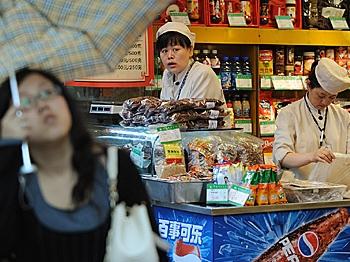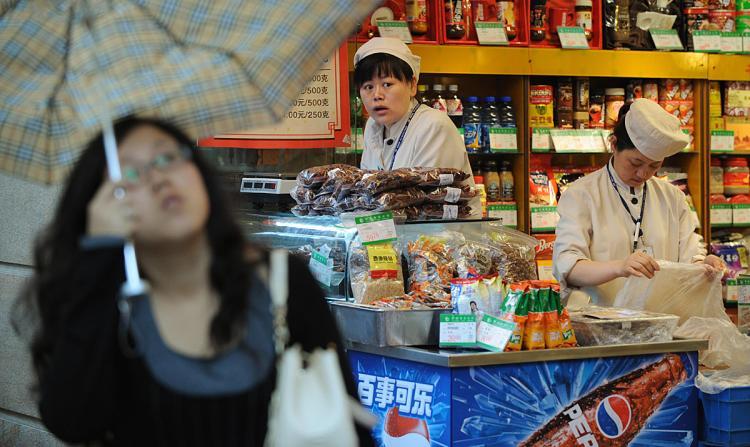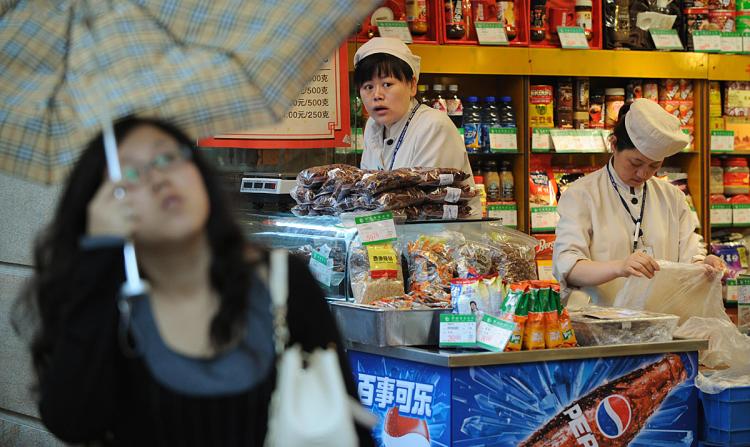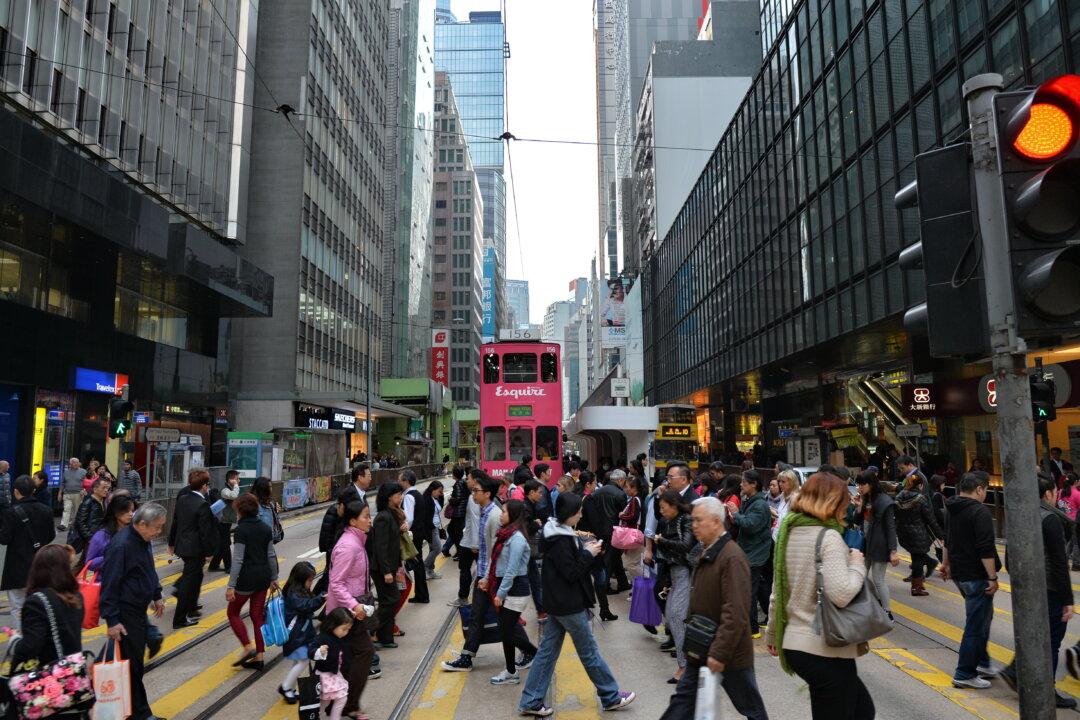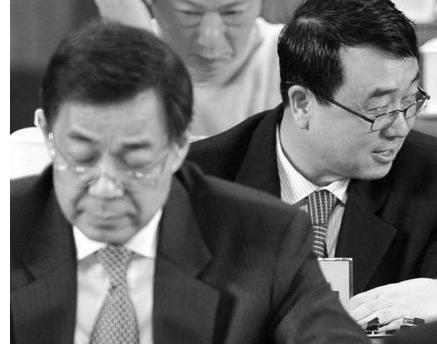As food prices soar worldwide, feeding 1.3 billion Chinese has become the primary goal in Beijing’s efforts to control the nation’s inflation. Rapid business and industrial development encroaches on major arable lands, and the problem of hybrid rice has caused a miraculous increase in output, but lower prices. The topical subject in today’s world is whether China’s development will be the determining factor for future food prices globably.
Wang Ji, a Lanzhou City resident in Gansu Province, cited the Lanzhou noodle, a local flavor, as an example of recent sharp price increases. “It was two yuan (approx. US$ 0.30 cents) a bowl just last year, but it became four and a half yuan (approx. US$ 0.70 cents) early this year. And in some places, they sell at five yuan a bowl,” said Wang. Yet, the owner of one of the local noodle eateries named Ma argued, “The price is going up for everything, including beef, cooking oil, electricity, fuel, etc. And rent has increased substantially. If I did not raise the price for my beef noodles, I couldn’t even survive.”
In the conflict of opinions between Wang and Ma, flour prices, however, are not a major factor. The Chinese government tightly controls food prices and, as a result, flour as one of the state controlled commodities has not experienced major price increases in recent years. For instance, in mid 2006 wheat prices in international markets started rising noticeably. However, the flour produced in Shandong Province, one of China’s major wheat producing areas, was about 1,900 yuan (approx.US$270) per ton and climbed to roughly 2,300 yuan (approx. US$330) per ton in mid 2008. The price went up about twenty percent over two years, far less than the increase in the international market, which more than doubled.
Food Prices Are a Priority
In late 2007, China cancelled its tariff rebate for exports on 84 grains including wheat, rice, corn, beans, etc. Two days later it announced an additional tax increase of five percent to 25 percent for a one-year period on the export of 57 grains, again including wheat, rice, corn, beans, etc. Meanwhile, quota licenses were imposed on the exports of wheat flour, corn meal, and rice flour.
According to Chinese media, China’s two announcements triggered a significant rise in food prices in international markets. However, the prices for food futures in China’s domestic commodity exchanges fell across the board, which resulted in a huge gap between international and domestic food prices. For example, the current international price for rice has reached as high as US$1,000 dollars per ton, whereas in China the price is merely 2,600 yuan (approx. US$370), a three-fold difference.
It is apparent that the Chinese government managed to keep its food prices from rising through isolating its domestic market from the international market. As a matter of fact, at the central working meeting at the end of last year, Beijing decided that China’s economic objective in 2008 would focus on containing inflation. As the key component of the consumer goods price index, food prices are targeted as the first priority.
A government official from Sichuan Province told a New Epoch Weekly reporter privately, “This is fully understandable. China has 240 million people living on less than one U.S. dollar a day. Their expenses for food account for 60 to 70 percent of their total income. So, if food prices rise, these people will immediately suffer from hunger, and social stability will be endangered.” Thus, food price control is Beijing’s top priority.
Actually the food prices in China are mainly controlled by two mega enterprises—China Food Group and China Food Reserve Group, with the former controlling market prices and the latter acquisition prices. They are both backed by China’s Finance Ministry. The price difference is “suggested” by the State Council and the Commission on Development and Reform, which is an important feature in this market economy with Chinese characteristics.
Who Benefits From Food Subsidies?
In February and again in April 2008, five government ministries including the State Commission on Development and Reform, twice increased the acquisition price for rice and wheat over 2007 prices. The rice price went up by 7 yuan (approx. US$1.00) per 50 kilograms, and the wheat price rose by three to five yuan (approx. US$0.40 to US$0.70). The two increments resulted in an increase of nine to ten percent for rice and four to seven percent for wheat.
However, the price increases of four to ten percent are far from enough to make up for the losses of the farmers, especially in the light of the substantial price increases in the international market, which in turn became the major reason for containing domestic food production. China’s economy experienced high growth during the past ten-plus years. Its government revenue rose on average by 20 to 30 percent and its urban residents saw their income climb by an average of eight to ten percent per year. In contrast, farmers’ income was up only by about five percent, over 60 percent of which was made by farmers who went to work in the cities. (note, although they work in the cities, their residential registration status was still classified as rural residents, which restricts their ability to receive certain benefits that urban workers enjoy)
“Why can’t we export grains at higher prices so that our farmers will make more money and be willing to grow crops?” Professor Lu Feng of the China Economic Institute of Beijing University questioned whether “The right food price is the most important factor for food policy and food security.”
The fact is that the money earned from increased food prices is mostly off set by the rising costs of other goods related to agricultural production, and farmers themselves are not receiving much benefit. Take urea for example. In 1998, China’s urea price was about 800 yuan (approx. US$100) per ton, and by early 2008 it had reached 2,500 yuan (approx. US$360), an increase far greater than that of food prices.
Beijing is well aware of the problem. When the State Council decided to subsidize agriculture prices, it faced the problem of who should receive the money. In the opinion of the Commission on Development and Reform, the money should go to chemical producers rather than the farmers.
China Is Agriculturally About 90 Percent Self-Sufficient
China’s total food output hit an all time high at 500 million tons in 1998, with a per capita consumption of 385 kilograms. As of 1998 food production started to fall and continued for four years as a result of low food prices, converting arable lands into forests, and urban expansion. The production started to rise again in 2004, but has not reached its 1998 level.
The latest data shows that China is respectively 96 and 109 percent self sufficient in wheat and rice, but has serious shortages of corn and soy beans. Especially with soy beans, the country can produce only one third of what it needs, with the other two thirds met through imports. Thus, China has been the largest buyer of soy beans for years in the international market, purchasing 35 million tons a year, accounting for about half soy bean sales in the international market.
Taken all together, China specialists estimate that the nation is about 90 percent self sufficient in food production.
Overlap of Urban and Most Productive Agricultural Land
Worldwide, agricultural land comprises only 10.2 percent of all land. Agricultural land in China comprises 8.6 percent of all the agricultural land in the world, and 13.68 percent of the entire land mass of China.
In 2004 and 2005, Chinese Premier Wen Jiabao emphasized several times that 1.8 billion mu (approximately 120 million hectares) of agricultural land would be preserved as China’s “lifeline.” However, preserving this “lifeline” proved to be nothing but challenging. China is in a rapid process of industrialization and urbanization. Agricultural land resources are being sought after by industrial and urban users. It is inevitable that some agricultural land will be converted to other uses. In the last several years, agricultural land was reduced by hundreds of thousands of hectares per year, severely threatening the security of Chinese grain production.
Some experts in China think that the conversion of agricultural land will slow down or stabilize around 2010. However, economists from other countries are less optimistic. Experts in the United States and Japan think that China will follow the examples of Japan, Taiwan, and Korea, where a large amount of agricultural land was converted to industrial use during the development process, and where domestic grain production supplies less than 50 percent of the total demand.
An official from the Ministry of Agriculture of China said that China’s agricultural land generally falls into three categories: high production, medium production, and low production. High production land is only about a quarter of the total agricultural land, yet contributes almost 50 percent of China’s total grain production. “The issue is that the land converted from agricultural to industrial and urban use is mostly located along the eastern coastal areas and Northern China Prairie. These happen to be exactly where high production agricultural land is located. The impact has been severe.”
Chinese Food Demand Receives International Attention
Does China have a food security problem? What are the appropriate policies to manage the problem? International experts such as Lester Brown, author of the book “Who Will Feed China,” have expressed their concerns about the balance between the international food supply and demand, yet the Chinese government looks at it more from a political perspective. Overall, the consensus is that a populous country like China, with 1.3 billion people, cannot buy its way out of the problem like many smaller countries.
If the Chinese economy continues at the speed it has developed for the last 20 years, more and more people will live a “middle-class” lifestyle. The typical “middle-class” population in American consumes 150 percent more meat than the average Chinese, while the European “middle-class” meat consumption is 70 percent higher than that of China. To produce a pound of meat requires seven pounds of grain. It is foreseeable that China’s grain consumption will soon shoot higher.
In the mid-1990s, residents of four major Chinese cities (Beijing, Shanghai, Guangzhou, and Shenzhen) consumed an average of 600 kilogram of grain each year. Even if the nationwide standard of living increases to that of these four cities in the 1990s, China’s grain consumption will increase by more than half. In other words, China needs 750 billion tons of grain to meet domestic demand.
However, to the Chinese government, purchasing food from the international market does not provide real security. A significant portion of the imports may need to come from the United States, Canada, and Australia. On the other hand, it is not realistic for China to meet its own domestic demand in the longer term. Two-thirds of China’s land mass consists of mountain, desert, and arid regions. Very little new land can be developed for agriculture use. Urban expansion, pollution, and limited water resources also constrain the growth of food production. In fact, Chinese food production has been flat for the last decade. This will be an issue of increasing global concern.
